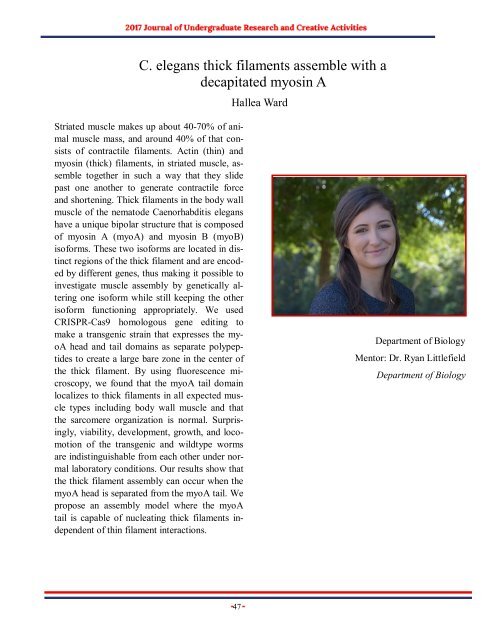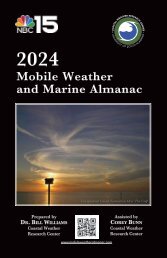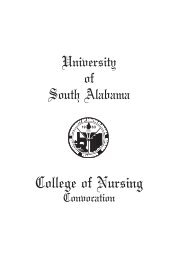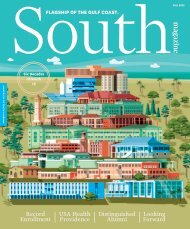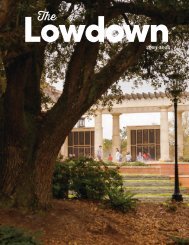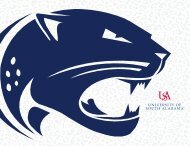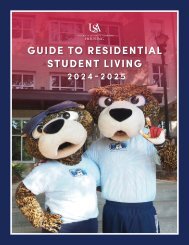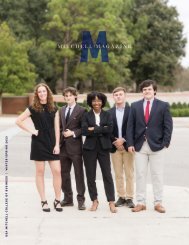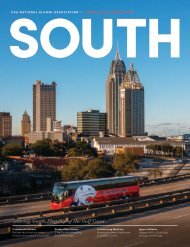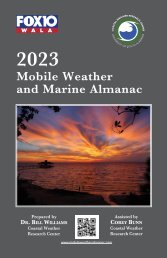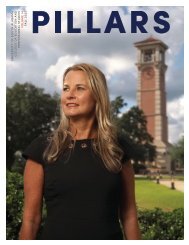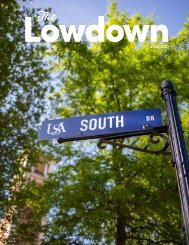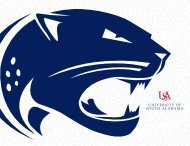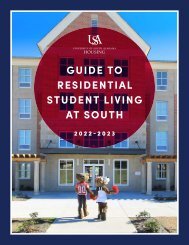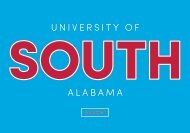JOURACA_SP_2017
Create successful ePaper yourself
Turn your PDF publications into a flip-book with our unique Google optimized e-Paper software.
C. elegans thick filaments assemble with a<br />
decapitated myosin A<br />
Hallea Ward<br />
Striated muscle makes up about 40-70% of animal<br />
muscle mass, and around 40% of that consists<br />
of contractile filaments. Actin (thin) and<br />
myosin (thick) filaments, in striated muscle, assemble<br />
together in such a way that they slide<br />
past one another to generate contractile force<br />
and shortening. Thick filaments in the body wall<br />
muscle of the nematode Caenorhabditis elegans<br />
have a unique bipolar structure that is composed<br />
of myosin A (myoA) and myosin B (myoB)<br />
isoforms. These two isoforms are located in distinct<br />
regions of the thick filament and are encoded<br />
by different genes, thus making it possible to<br />
investigate muscle assembly by genetically altering<br />
one isoform while still keeping the other<br />
isoform functioning appropriately. We used<br />
CRI<strong>SP</strong>R-Cas9 homologous gene editing to<br />
make a transgenic strain that expresses the myoA<br />
head and tail domains as separate polypeptides<br />
to create a large bare zone in the center of<br />
the thick filament. By using fluorescence microscopy,<br />
we found that the myoA tail domain<br />
localizes to thick filaments in all expected muscle<br />
types including body wall muscle and that<br />
the sarcomere organization is normal. Surprisingly,<br />
viability, development, growth, and locomotion<br />
of the transgenic and wildtype worms<br />
are indistinguishable from each other under normal<br />
laboratory conditions. Our results show that<br />
the thick filament assembly can occur when the<br />
myoA head is separated from the myoA tail. We<br />
propose an assembly model where the myoA<br />
tail is capable of nucleating thick filaments independent<br />
of thin filament interactions.<br />
Department of Biology<br />
Mentor: Dr. Ryan Littlefield<br />
Department of Biology<br />
47


